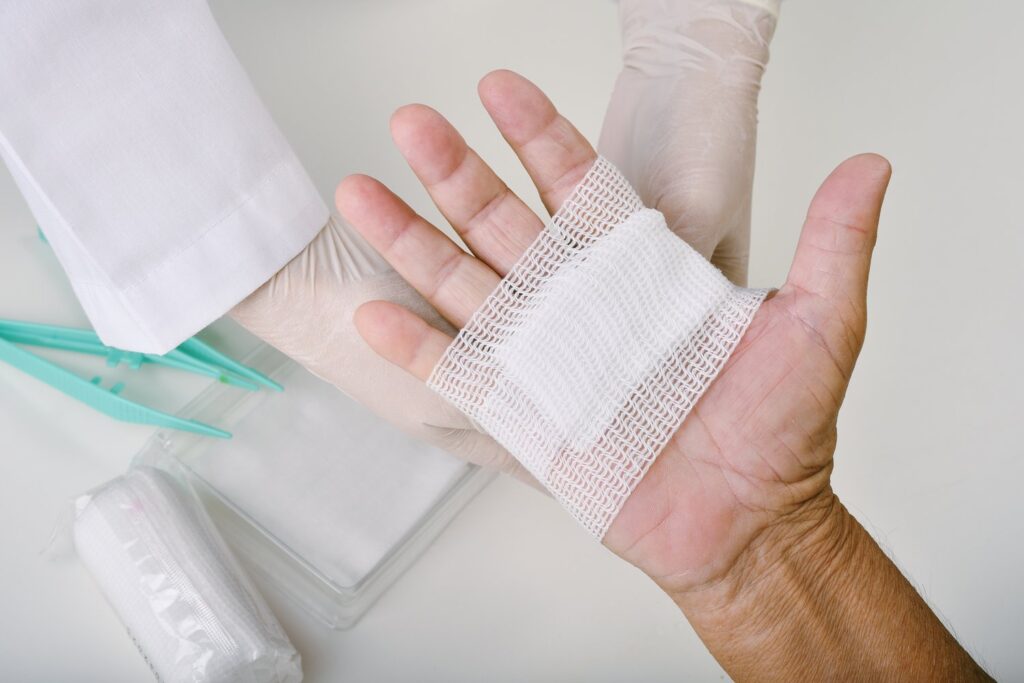Superficial wounds that might seem minor to some individuals can be life-threatening to others, particularly those with diabetes.
Diabetic wounds, especially on the feet, often heal slowly, leaving the tissue more susceptible to infections. These foot ulcers and other complications from diabetic foot conditions can have mortality rates comparable to certain cancers, yet advancements in treatment have stagnated. Thus, finding new methods to enhance the healing process is crucial.
Bioengineers at Arizona State University (ASU) have devised an innovative multistep strategy utilising different nanomaterials at various stages of wound healing. This method, which was detailed in the journal Biomaterials, surpassed a common wound dressing in tests on diabetic mice, healing wounds more swiftly and creating stronger skin tissue.
“Healing a wound is like building a house. You have to lay the foundation first before you can put in the plumbing,” explained co-first author Jordan Yaron, Ph.D., a bioengineering assistant research professor at ASU. “With our approach, we’re mindful of which stage the wound is in. Providing the right treatment at the right time is key.”
The researchers’ findings also revealed an unexpected activation of an immune cell population that usually isn’t present in wounds, capable of resolving inflammation. This discovery opens a new pathway for potentially accelerating the healing process.
Traditionally, the clinical approach to wound care involves keeping wounds clean and protected with dressings. While effective for many injuries, this method is less successful for patients with conditions like diabetes, which disrupt the healing process by affecting immune cell functions and causing poor circulation and neuropathy.
The ASU researchers developed a strategy tailored for such wounds and compared it against a standard dressing in diabetic mice. Initially, the team created a silk nanomaterial dressing embedded with gold nanorods. By using a laser to direct light onto these dressings, they produced heat that sealed the wounds quickly, offering high protection. Yaron noted that this method creates an effect similar to an instantaneous scab. The researchers also introduced histamine, a natural biochemical involved in inflammation and blood vessel development, to enhance the healing process.
Inflammation is the body’s initial response to injury but needs to subside for healing to progress. Diabetic wounds often get stuck in this inflammatory phase, maintaining persistent, low-grade inflammation that impedes healing. By co-delivering histamine with the dressing, the researchers aimed to push the wound past the inflammation stage, setting the stage for subsequent healing phases.
The ASU team monitored the mice for 11 days, observing that those treated with both the nanomaterial dressing and histamine healed the fastest. The treated wounds also resulted in the strongest and most robust skin tissue, comparable to unwounded skin.
To understand how the treatment accelerated healing, the team analysed tissue samples, examining gene expression and cell structures under a microscope. They discovered a significant presence of N2 neutrophils, a type of immune cell, in the treated wounds up to seven days post-injury. Normally, these cells clear out within a day or two, making their prolonged presence unusual. However, these cells are known to produce histamine and other reparative molecules, suggesting they play a crucial role in the treatment’s effectiveness.
Yaron highlighted the importance of this finding, indicating that further research is needed to understand the role of N2 neutrophils in wound healing.
Following this, the researchers sought to enhance healing by accelerating the post-inflammation phase, during which cells proliferate and remodel tissue. They introduced nanoparticles derived from growth factors—proteins that promote skin tissue formation—into the wounds at various time points. They found that administering these nanoparticles on day six yielded the best results for wound closure and tissue strength, corresponding to a critical transitionary phase in the healing process.
Buoyed by these promising results in mice, the researchers are now testing their approach in larger animal models, such as pigs, which are more relevant to human health.
“The authors put together previously existing components in a unique way. By considering the timing of bioactive delivery and analysing the immune response, the team put forth an impressive study. I believe they are in a good position moving forward,” commented David Rampulla, Ph.D., director of the Division of Discovery Science and Technology at the National Institute of Biomedical Imaging and Bioengineering (NIBIB).
The innovative approach developed by ASU bioengineers offers a promising new method for accelerating the healing of diabetic wounds. By utilising a strategic combination of nanomaterials and timing-specific treatments, this method not only enhances the healing process but also produces stronger, more resilient skin tissue. The discovery of the crucial role played by N2 neutrophils in this process opens new avenues for further research and potential clinical applications, bringing hope for improved outcomes in diabetic wound care.
Author:
Alex Carter
Content Producer and Writer
Nano Magazine


